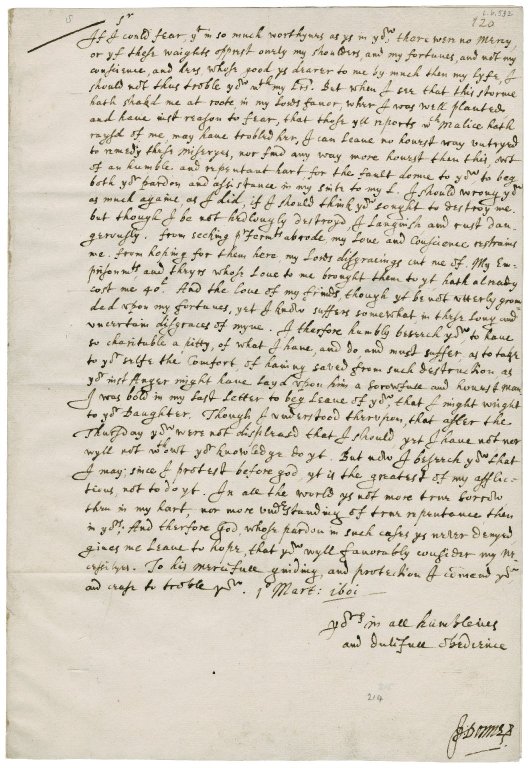
In England and France, from the 1500s to the 1700s, the placement of a letter writer’s signature on the page conveyed meaning as to his relationship with the recipient. In his 1568 letter-writing manual Enimie of Idlenesse, William Fulwood writes that the subscription and signature of the letter “must be doone according to the estate of the writer, and the qualitie of the person to whom wee write: For to our superiors wee must write at the right side in the neither end of the paper, saying: By your most humble and obedient sonne, or seruant, &c. Or, yours to commaund, &c. And to our equals we must write towards the middest of the paper, saying: By your faithfull friend for euer, &c. Or, yours assured, &c. To our inferiours wee may write on high at the left hand, saying: By yours, &c.”
In 1601 John Donne married Anne More without the blessing of her father, who was lieutenant of the Tower of London. Donne was incarcerated, and in his letters begging for clemency he crammed his signature into the bottom right-hand corner of the page to signal his self-abasement.
(From Sam Willis and James Daybell, Histories of the Unexpected, 2018.)
